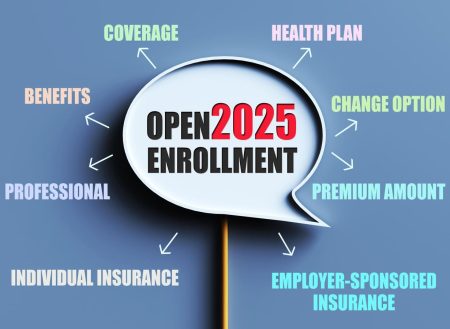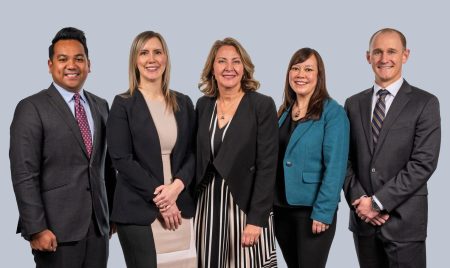For decades, studies, surveys, and near sermons have declared that America is not ‘retirement-ready.’ Financial firms, policymakers, and researchers (including this one) have spent years preaching the same well-intentioned gospel: save, plan, invest—then plan some more. The language has changed. We have evolved from financial literacy to financial wellness and wellbeing, but the results have not.
Despite decades of effort and billions spent on education, apps, advice, and advertising, the nation’s report card on retirement readiness has barely improved.
If a teacher found that more than half their students had been failing the same subject for decades, they (or parents and administrators) might begin to wonder: Is it the students? Or is it the curriculum (maybe it’s me)? Perhaps the lessons are too abstract, the examples too distant, or the teaching methods too uninspired to engage.
It’s time to rewrite the syllabus.
The Longevity Preparedness Index (LPI), developed by my team at the MIT AgeLab in collaboration with John Hancock, aims to do just that—by changing how we measure, teach, discuss, and think about the future of aging.
The Limits Of Retirement Readiness
For decades, planning for later life has been defined by two bookends: health and wealth. Both are essential, but alone they are also incomplete. In between those bookends lies complexity: the routines, relationships, choices, transitions, and activities that make up daily life.
Retirement planning tends to focus on the end of work and nearly singularly income security; longevity planning includes that but focuses on the future of life itself. It asks more human questions about being prepared for life tomorrow:
- Where will you live, and will your home support your changing needs?
- Who will you spend time with, and how will you stay socially connected?
- How will you get where you need to go, access care, and manage life’s transitions?
These are not abstractions about markets or medicine. They are the practical realities that determine whether we thrive in a 100-year life or merely survive it.
Longevity: More Than Paying For It, But Preparing For It
To understand how prepared Americans truly are to live longer, in collaboration with John Hancock, my MIT AgeLab team created the Longevity Preparedness Index. A first-of-its-kind national holistic and integrated measure that looks beyond health and wealth to assess how ready people are for the lived experience of living longer.
The Index measures preparedness across eight critical domains that research shows are fundamental to quality of life in older age: health, finance, care, home, daily activities, social connection, community, and life transitions.
So How Are We Doing?
In a nationally representative survey of more than 1,300 U.S. adults, Americans scored an average of 60 out of 100. If it were a grade, America earned what is effectively a “D” in longevity preparedness. Here are just a few highlights from the study.
The lowest scores were in care (42), home (56), and health (56). These areas relate to caregiving, housing flexibility, and personal well-being. Few respondents knew who would care for them or how they would pay for it. Many hadn’t thought about how their homes might need to change to support aging in place.
Yet there were bright spots: the highest scores appeared in community (70) and social connection (69), evidence that people still find strength and identity in the networks that surround them.
Women outperformed men in most domains, especially care and social connection—suggesting that while financial preparedness often dominates the conversation, emotional and relational readiness may be the true currency of longevity.
Not An Alarm, But A Script Change
The Longevity Preparedness Index (LPI) was never meant to be another alarm bell or a pass/fail test. It is not a headline about what’s wrong; it’s a framework for thinking differently about what it means to be ready for the future.
Planning is about intent. Meeting a savings target, staying on a budget, checking off a bucket list.
Preparedness is ultimately about action. It requires awareness of what lies ahead, assessing whether assumptions are realistic, and practical actions, putting systems, supports, and social networks in place before they are needed.
Preparedness turns the abstract into something tangible. It shifts the discussion from “what you might need someday” to practical questions of “how you’ll live every day.”
A New Framework For Living Longer Better
The LPI is not a one-and-done study. It’s a new foundation for understanding what it takes to live longer and better. Over time, it will track how preparedness changes across generations and countries, revealing what interventions, innovations, and policies truly make a difference.
The goal is not simply to raise scores. It’s to reframe the agenda for individuals, families, financial professionals, employers, and policymakers.
As Brooks Tingle, President and CEO of John Hancock, put it:
It’s no longer just about how much you’ve saved for retirement or even about how healthy you are; it’s also about where you’ll live, how you’ll fill your days, and who you’ll share them with.
The future of advice, retirement, and well-being will be shaped not only by markets or medicine but by how effectively we help people design the infrastructure of daily life in older age.
The Next Chapter of Longevity Planning
Longevity is the quiet force transforming everything from work and healthcare to family and finance. Yet our approach to preparing for it still belongs to another era. One where old age was short, fragile, and predictable.
The Longevity Preparedness Index challenges that outdated model. It asks not, “Are you retirement ready?” but “Are you life ready?”
The next chapter of planning is not about the end of work; it’s about the art of living well across 8,000 days or more of what comes next.
That is the new curriculum of longevity. It’s time to stop grading retirement and start teaching longevity.
Read the full article here









